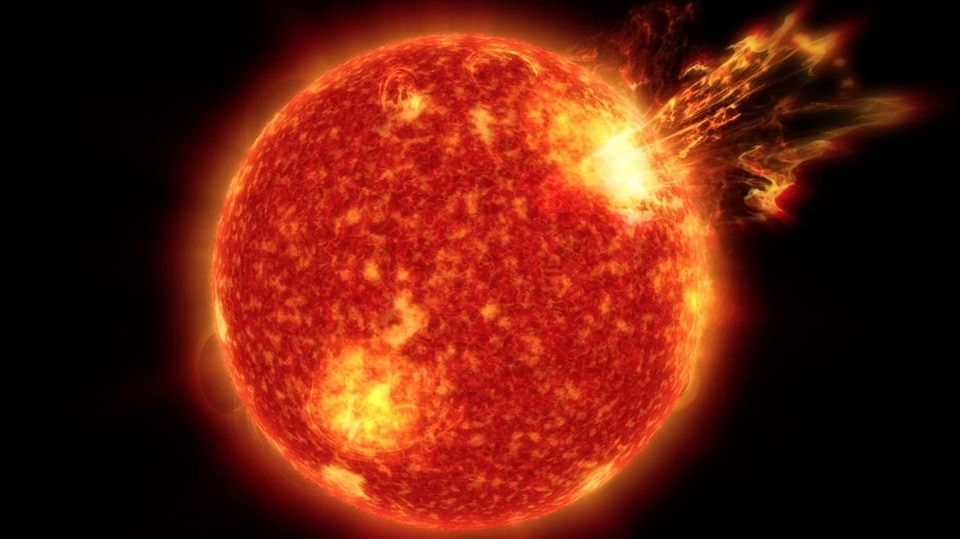Skywatchers around the world were on high alert in late March as the Sun unleashed a solar tantrum.
On March 22nd, our star erupted with a powerful X-class solar flare, the strongest type, and launched a barrage of super-heated plasma towards Earth in a coronal mass ejection (CME). This energetic onslaught was predicted to hit Earth’s magnetosphere, the protective shield generated by our planet’s magnetic field, and potentially trigger a dazzling display of auroras. The National Oceanic and Atmospheric Administration (NOAA) even hinted at the possibility of southern viewers witnessing the Northern Lights (aurora borealis) as far south as Alabama and northern California.
Unfortunately, for aurora enthusiasts, the storm turned out to be a bit of a let down. While it did reach G4-class intensity, making it the strongest geomagnetic storm since 2017, a crucial factor – the orientation of the interplanetary magnetic field (IMF) – conspired to dampen the celestial light show.

The Invisible Conductor: How the IMF Orchestrates Auroras
Geomagnetic storms are the result of fluctuations in the solar wind, a constant stream of charged particles flowing outward from the Sun. When a CME, a giant bubble of magnetized plasma, collides with Earth’s magnetosphere, it can distort the magnetic field and trigger a geomagnetic storm. The intensity of the storm is measured on a G-scale, ranging from G1 (minor) to G5 (extreme).
However, the intensity of the geomagnetic storm isn’t the sole factor governing the aurora’s brilliance. A hidden conductor, the IMF, plays a critical role in directing the energetic particles responsible for the light show. The IMF carries its own magnetic field, and the orientation of this field relative to Earth’s magnetic field dictates how effectively these charged particles are channeled towards the poles.
The Bz component of the IMF is particularly important. This component refers to the north-south direction of the IMF’s magnetic field. When the Bz is southward, it interacts more effectively with Earth’s northward magnetic field lines. Imagine them like opposite ends of a magnet snapping together. This creates an “open door” that allows energetic particles from the solar wind to funnel down into the upper atmosphere at the poles. These energetic particles collide with atmospheric gases, supercharging them and causing them to emit light, creating the breathtaking auroras.
A Closed Door: Northward Bz Dampens the Light Show
However, if the Bz is oriented northward during a geomagnetic storm, it acts like a “closed door.” The IMF’s northward magnetic field lines oppose Earth’s northward magnetic field lines, hindering the flow of charged particles towards the poles. While auroras can still occur with a northward Bz, they are typically less dramatic and more confined to the high-latitude regions around the Arctic and Antarctic circles.
Disappointment for Aurora Chasers: A Case of Celestial Misalignment
In the case of the late-March solar storm, the Bz remained stubbornly northward during the peak of the geomagnetic storm. While the storm itself was significant, the lack of a southward Bz meant that the energetic particles struggled to reach the lower latitudes, where they are needed to create the vibrant auroras visible to naked-eye observers. By the time darkness fell across North America and Europe, Earth had seemingly shut the door on auroras, leaving aurora chasers disappointed and their cameras pointed skyward in vain.
This turn of events serves as a reminder of the complex and unpredictable nature of space weather. Scientists can monitor solar activity and forecast potential geomagnetic storms with increasing accuracy. However, the orientation of the IMF adds an element of uncertainty to the aurora-viewing experience. Despite the fizzle, the storm provided valuable insights into solar-terrestrial interactions. It underscores the importance of continued space weather monitoring to protect our technological infrastructure from the potential impacts of powerful solar events. These storms can disrupt power grids, communication systems, and even satellites – a vital reminder of our dependence on a healthy and stable space environment. The quest to understand and predict space weather continues, and future solar storms may yet deliver the celestial fireworks that skywatchers crave.



















